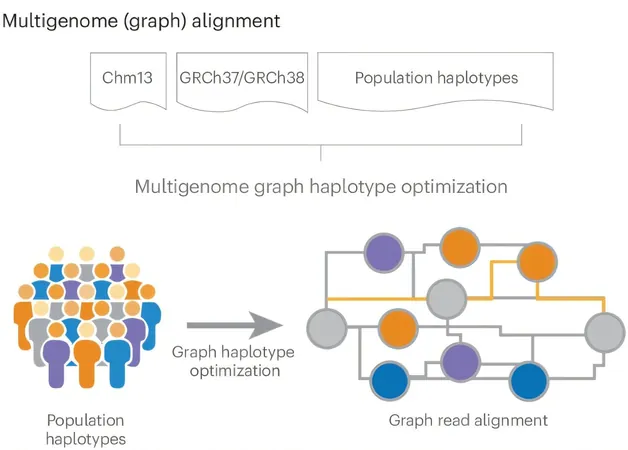
Revolutionary Breakthrough in Blood Cancer Therapy: Induction of Faulty Cell Division Could Be Key!
2024-10-31
Author: Li
Introduction
In the intricate world of cellular biology, the process of cell division stands out as a marvel of nature. Within mere hours, a single mother cell must replicate its entire genome—comprising billions of 'letters'—and duplicate crucial cellular structures to yield two fully functional daughter cells. Central to this process are centrosomes, which play a pivotal role in orchestrating cell division.
Centrosomes and Cell Division
When a cell is about to divide, two centrosomes emerge, stretching long protein filaments known as the spindle apparatus toward the duplicated genetic material. This complex apparatus ensures that each daughter cell receives an identical copy of the genetic material. However, when this system falters, the outcomes can be disastrous. Cells may wind up with abnormally high numbers of chromosomes and centrosomes, rendering them unsuitable for healthy growth and making them susceptible to malignancies.
Groundbreaking Discoveries
A team of researchers led by Andreas Villunger, an Adjunct Principal Investigator at CeMM in Vienna, along with Luca Fava from the University of Trento, Italy, has made groundbreaking discoveries regarding what happens when cell division goes awry. Published in *Science Advances*, their study uncovers how defective divisions prompt programmed cell death, known as apoptosis.
The Role of the PIDDosome
At the heart of their findings is a protein complex dubbed the PIDDosome, which is activated in cells with multiple centrosomes—a signature of improper division. This complex triggers the enzyme caspase-2, initiating two parallel death pathways within the cell. The first pathway unleashes the protein BID, which wreaks havoc on the mitochondria—the cell's powerhouses—prompting death. Concurrently, caspase-2 activates the tumor suppressor p53, which instigates additional signaling pathways that also culminate in cell death. This dual assault guarantees the elimination of cells harboring multiple centrosomes, even in scenarios where either BID or p53 function might be inhibited.
Implications for Cancer Therapy
The implications of this research extend far beyond basic science; they herald a future where blood cancer treatments could be revolutionized. Cancer cells are notorious for their unrestrained and rapid division, often leading to the formation of multiple centrosomes. The lethal properties of the PIDDosome could potentially be leveraged to amplify the effectiveness of existing cancer therapies.
Future Directions
According to Villunger, by monitoring BID and caspase-2 activity in patients, healthcare providers may better identify those who are most likely to respond favorably to novel drugs disrupting cell division. Fava adds a note of caution, remarking on the lengthy journey from laboratory research to clinical application, yet emphasizes the necessity of comprehending the mechanisms behind approved therapies to enhance their efficacy and reduce invasiveness.
Conclusion
With such promising developments on the horizon, the hope for improved treatment strategies for blood cancer patients seems closer than ever. This exciting research not only provides valuable insights into cellular processes but may also pave the way for new combinations of existing drugs—offering fresh hope to countless patients battling this formidable disease. Stay tuned as this story continues to evolve, potentially transforming the landscape of cancer therapy!




 Brasil (PT)
Brasil (PT)
 Canada (EN)
Canada (EN)
 Chile (ES)
Chile (ES)
 España (ES)
España (ES)
 France (FR)
France (FR)
 Hong Kong (EN)
Hong Kong (EN)
 Italia (IT)
Italia (IT)
 日本 (JA)
日本 (JA)
 Magyarország (HU)
Magyarország (HU)
 Norge (NO)
Norge (NO)
 Polska (PL)
Polska (PL)
 Schweiz (DE)
Schweiz (DE)
 Singapore (EN)
Singapore (EN)
 Sverige (SV)
Sverige (SV)
 Suomi (FI)
Suomi (FI)
 Türkiye (TR)
Türkiye (TR)